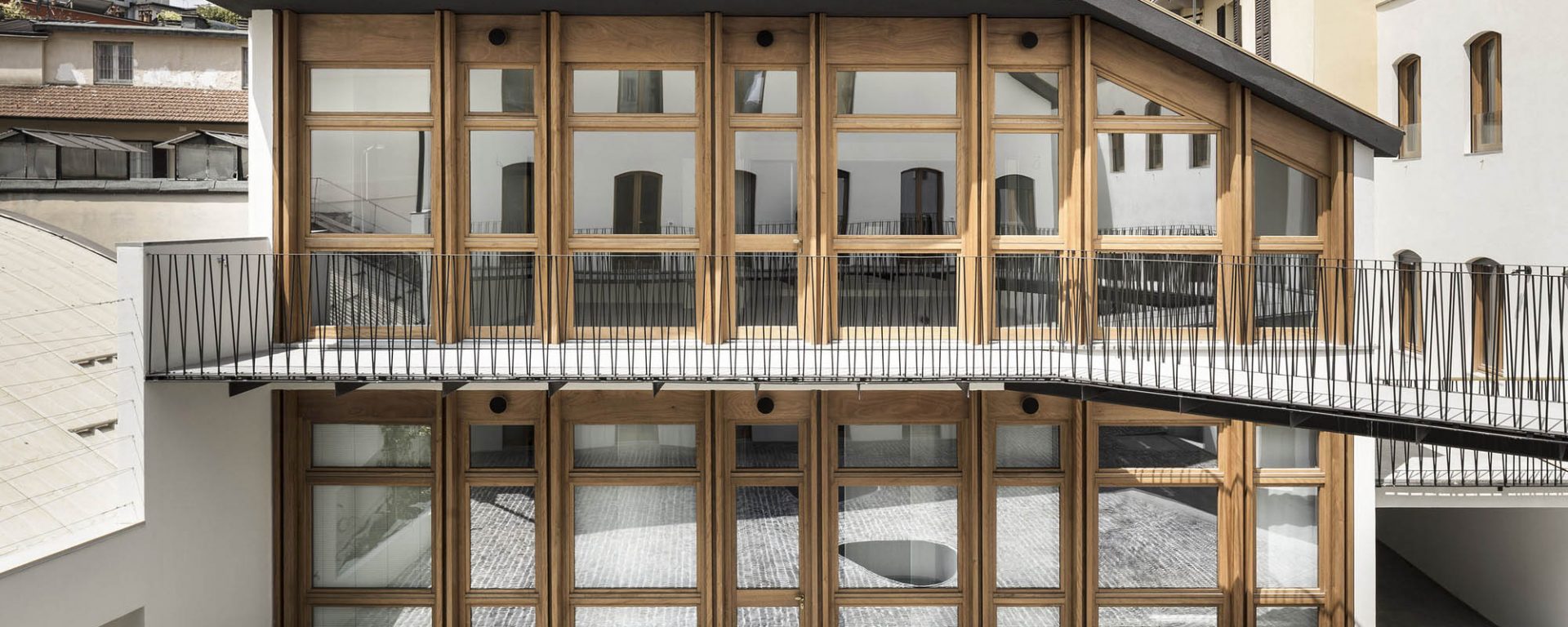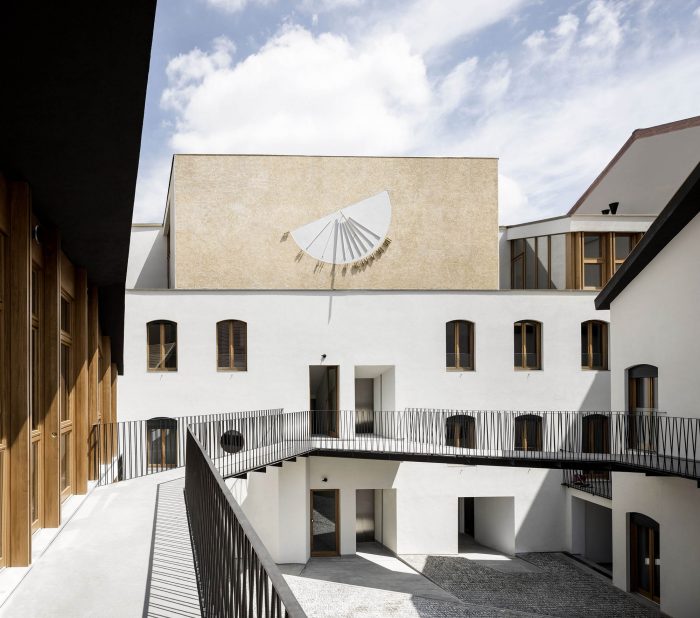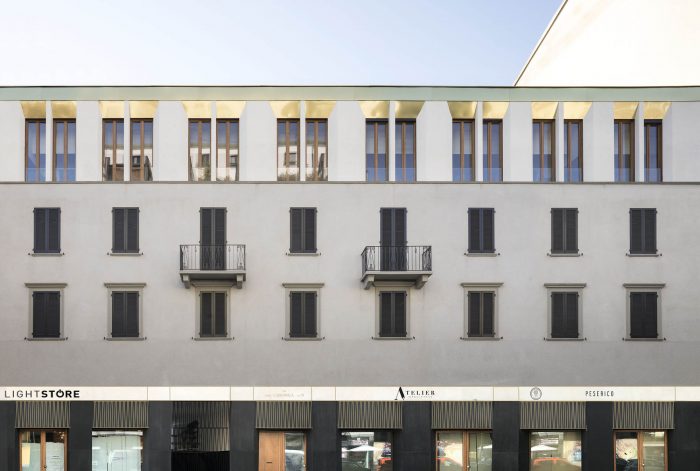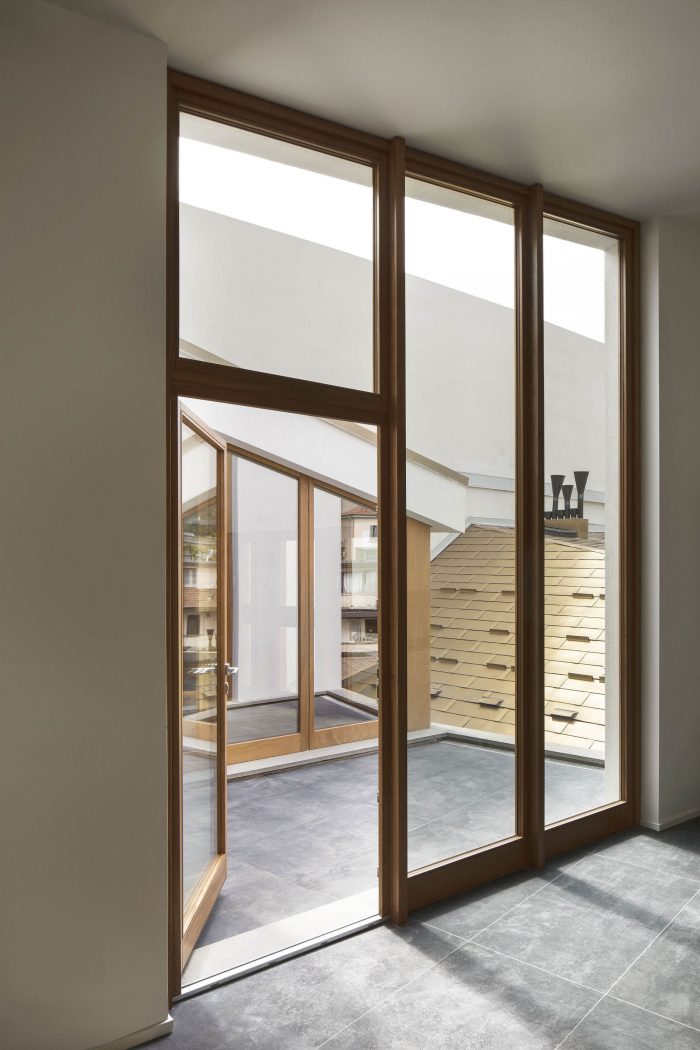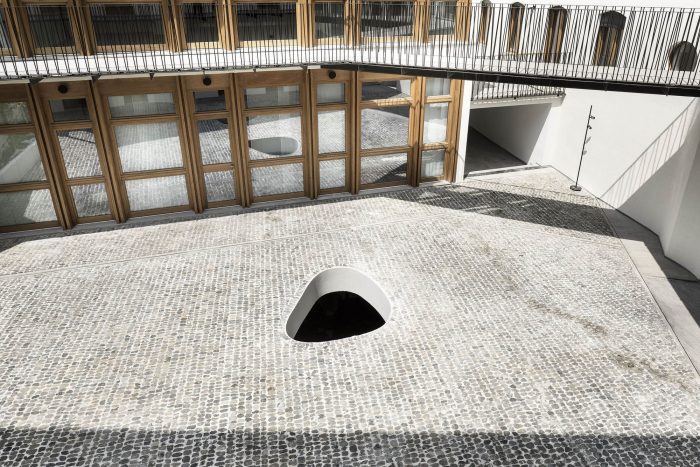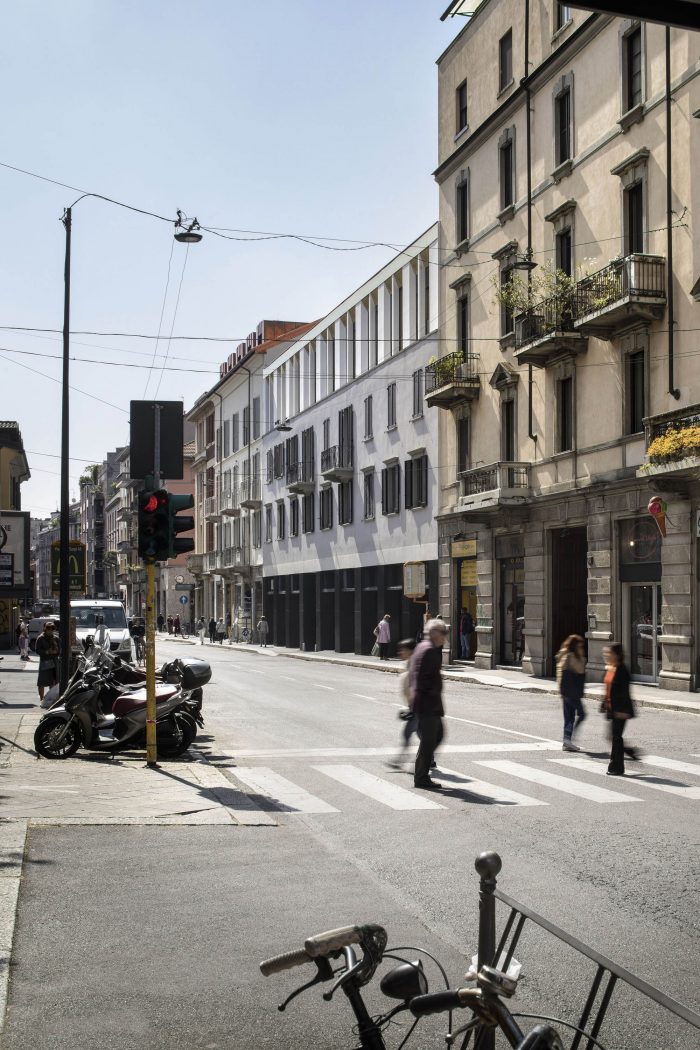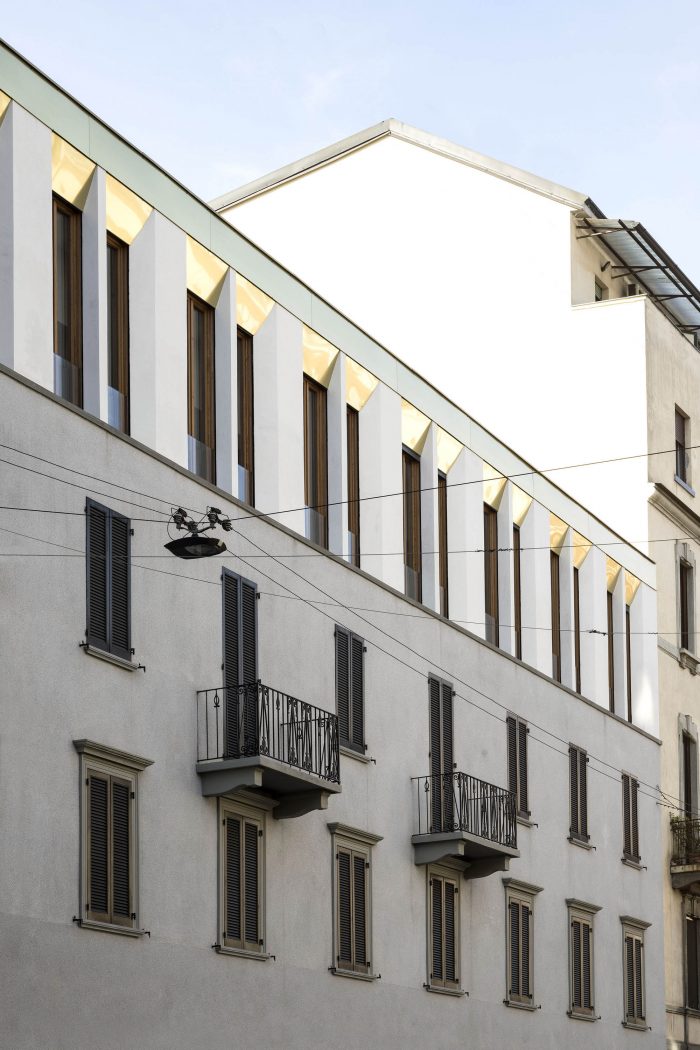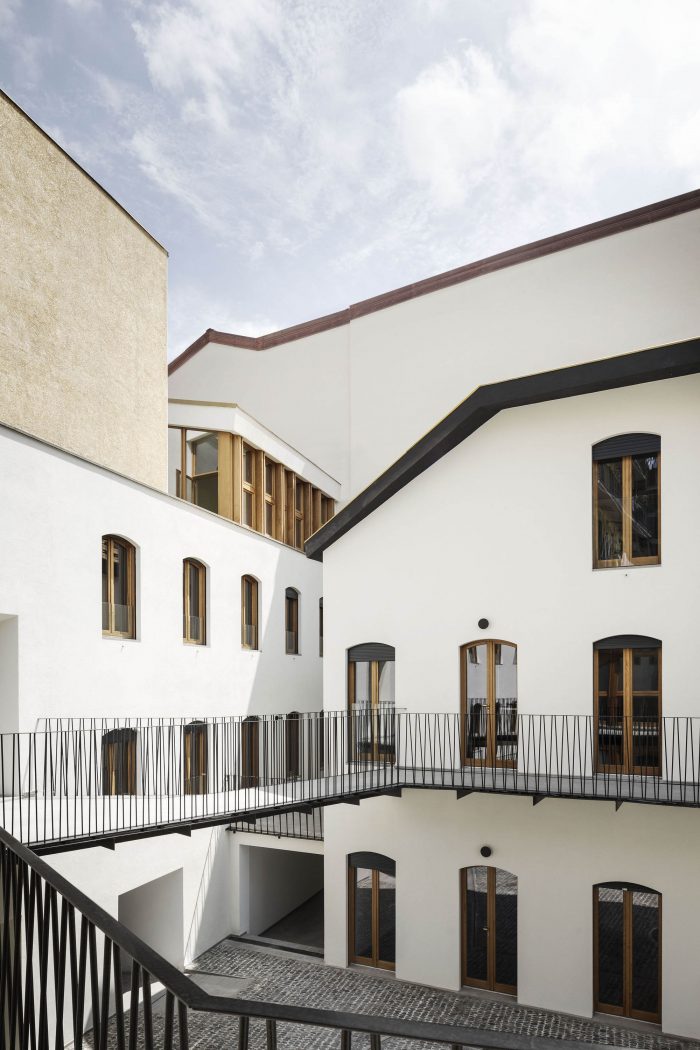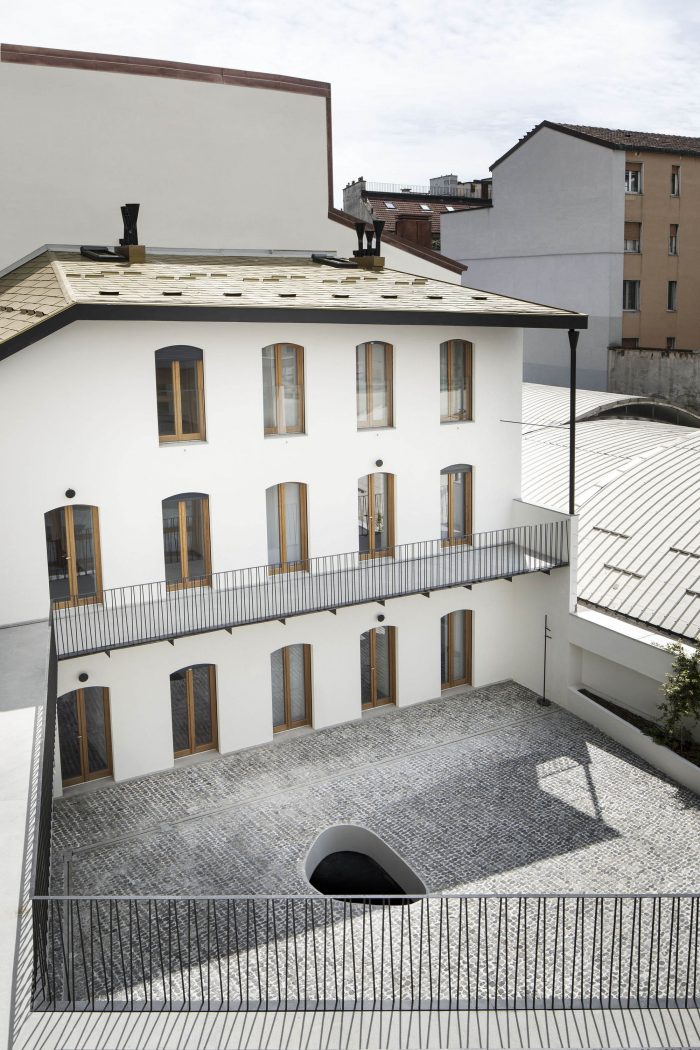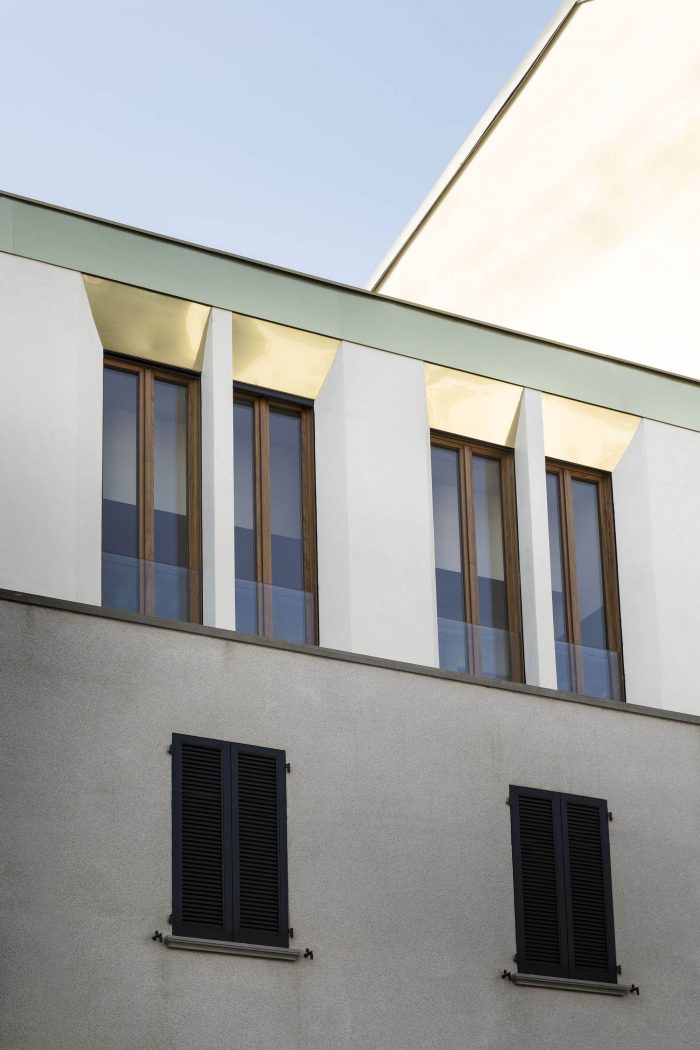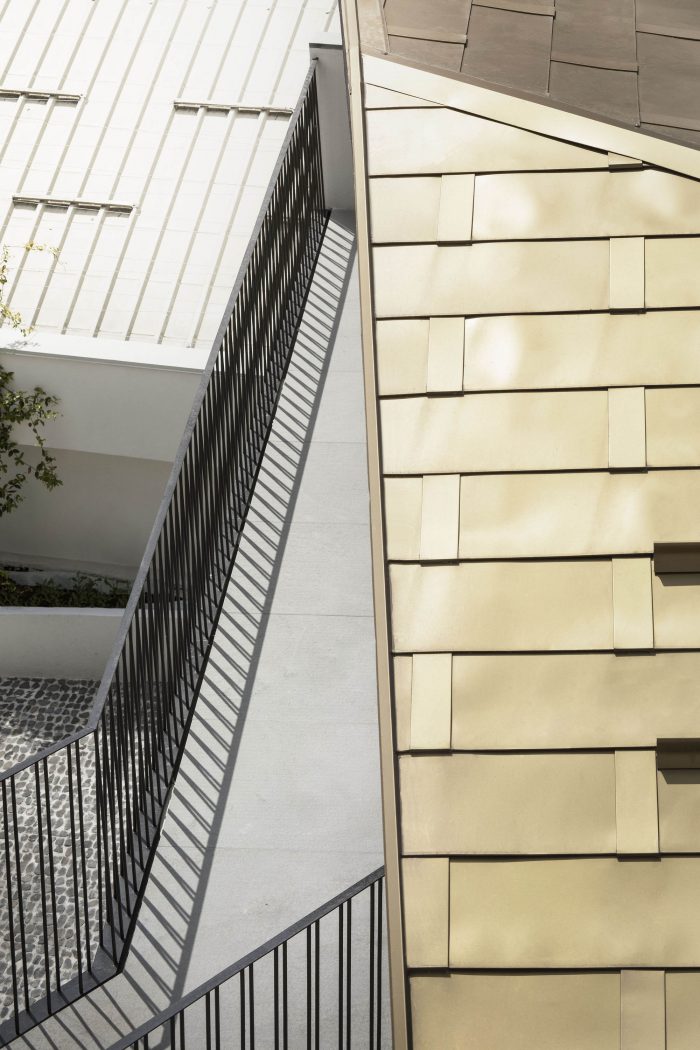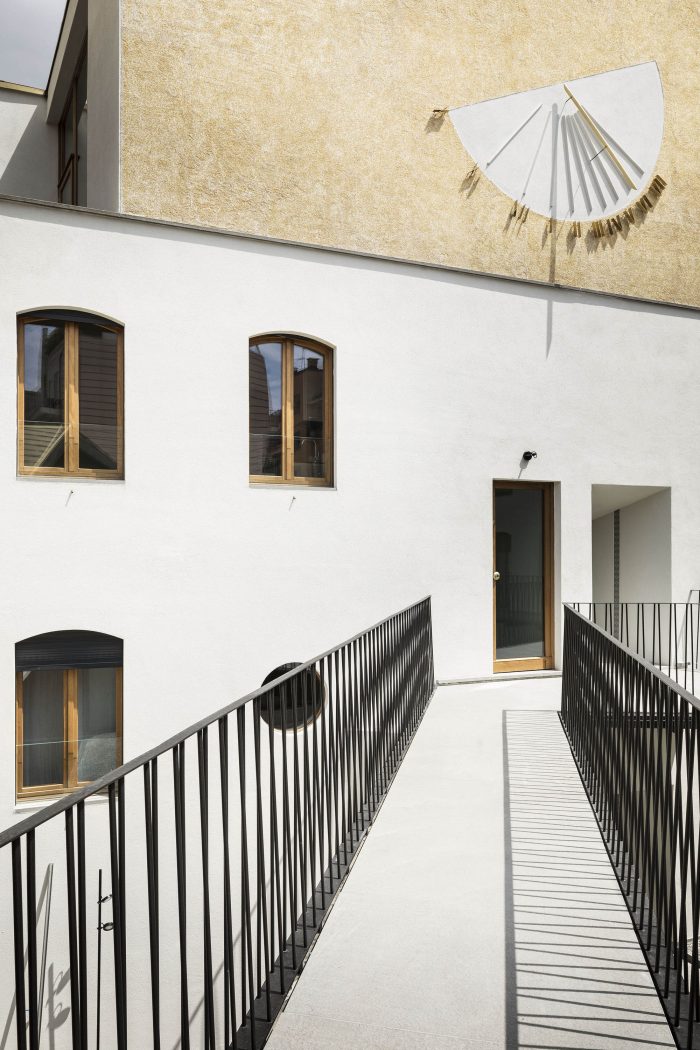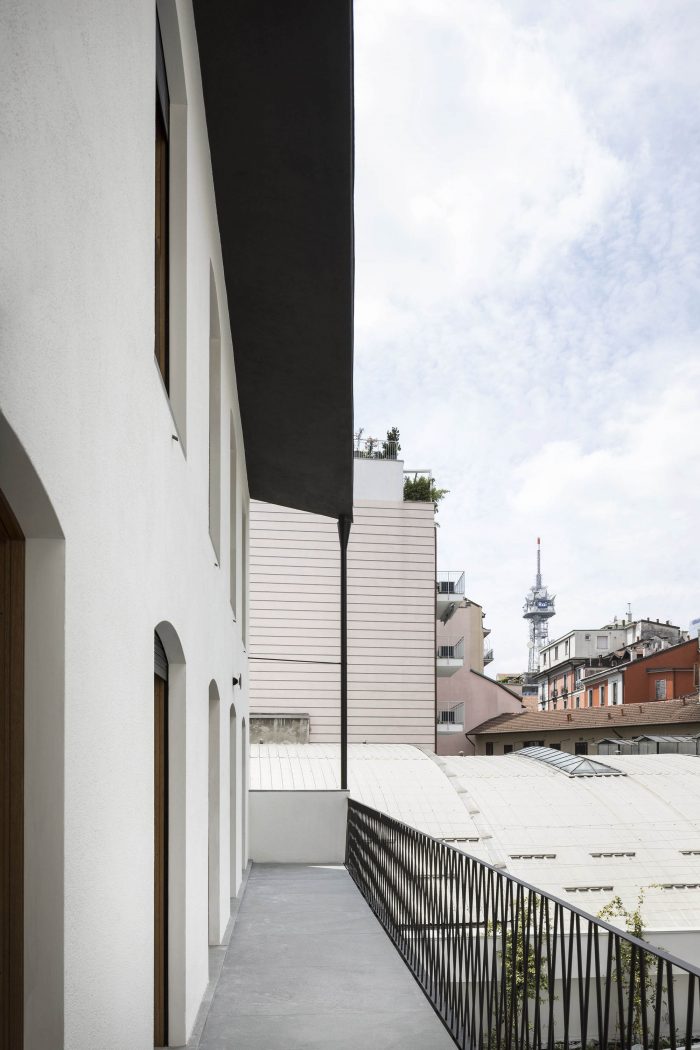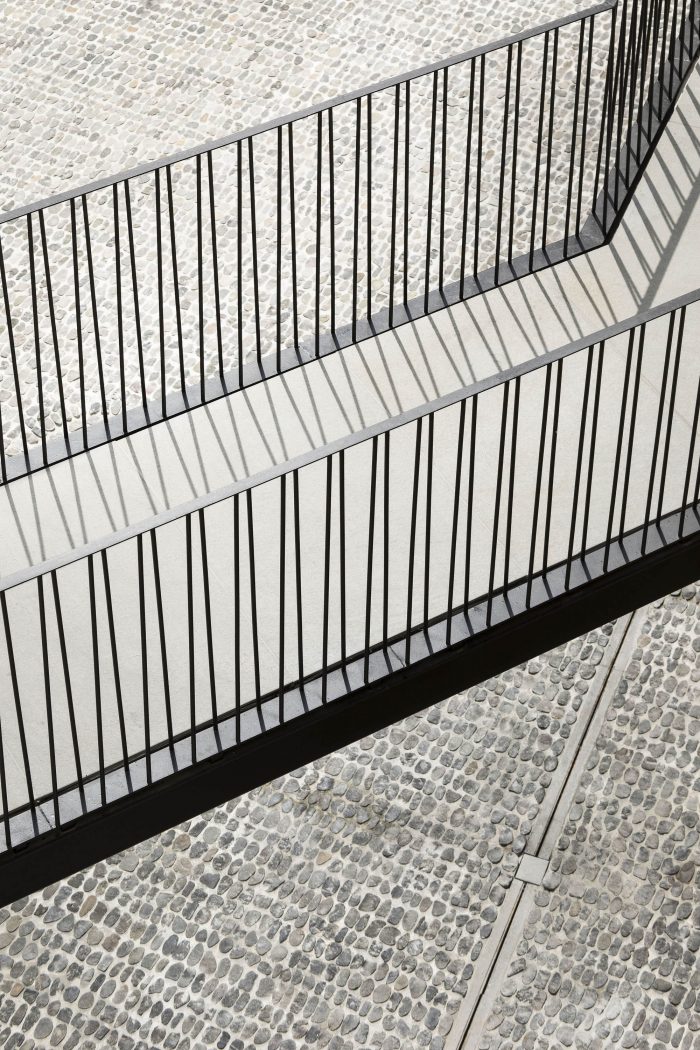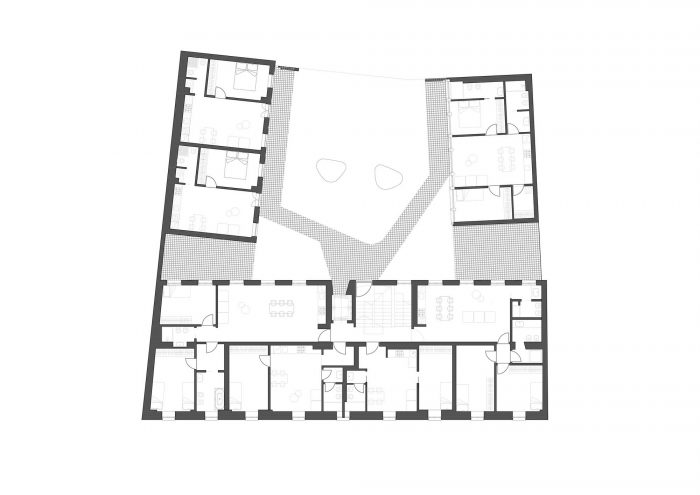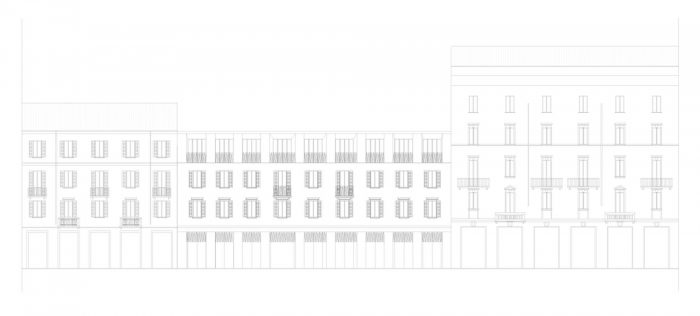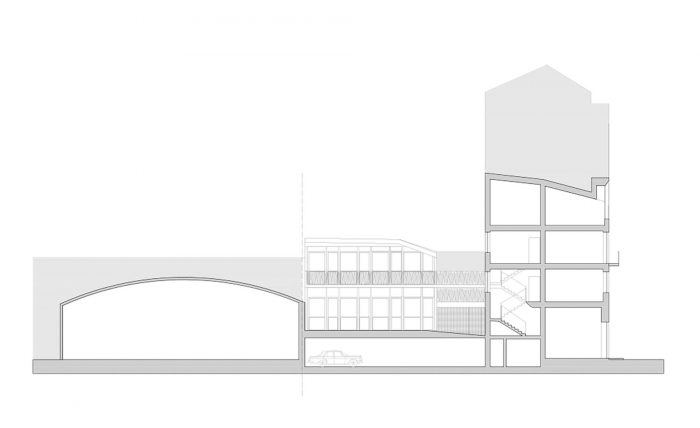对一座临街建筑的干预提出了一个问题,即是通过替换还是通过重建和体量整合来采取行动。选择后者可以解决两个相辅相成的问题:一方面是为了避免彻底的拆除和重建,另一方面是为了保留原有建筑的记忆,使其成为城市景观的一部分。新旧污染的选择是一种更普遍的信念的一部分,因为人们相信,通过修改和改造建筑来重写建筑的历史往往比废除和替换更有趣,这一点已经很明显,即使是在城市范围内。
To intervene on a building facing the street raised a question on whether to act through its replacement or through reconstruction and volumetric integration. Choosing the latter answers two complementary instances: on the one hand to avoid a complete demolition and reconstruction and on the other the desire to preserve the memory of the pre-existing building as part of the urban scene. The choice to contaminate the old and the new is part of a more general conviction for which it is believed that rewriting the history of a building by modifying it and transforming it is often more interesting than its annulment and replacement, as has become evident, even on an urban scale.
这种方法的有趣之处,即使是在卡诺尼卡的街道这个具体案例中,也是试图让项目中的时间感具体化。在保留部分已有建筑的情况下,并不与方案要求形成公开对比,但事实上,时间痕迹的存在被认为是一种内在品质,因为在新的和已经确定的城市和语义关系之间的相互关系中,它允许重新定义记忆和当代性的价值。
What is interesting about this approach, even in the specific case of Canonica’s street, is the attempt to make tangible the sense of time within the project. Where the preservation of parts of pre-existing buildings is not in open contrast with the programmatic requirements, the presence of the signs of the time is in fact recognized as an intrinsic quality since, in the mutual relationship between new and already settled urban and semantic relations, it allows redefining both the value of memory and that of contemporaneity.
因此,一楼和二楼保持了原来的形式,而底层,当然还有额外的冠层则完全重新设计。从构图的角度来看,我们试图尊重保留部分的排列,为地下室和顶层提供了全高的开口,这些开口不能被识别为真正的窗户,而是在所属带内的切割。
The first and second floors were therefore maintained in their original forms, while the ground floor and, of course, the additional crowning plan were completely redesigned. From the point of view of the composition, we tried to respect the alignments of the preserved part, providing, both for the basement and for the crowning, full-height openings not recognizable as real windows but as cuts within the belonging band.
这些空隙用不同角度的喇叭形计数器与立面的线连接起来,以规范和重新吸收现有窗户轴线的稳定间距所产生的差异。根据米兰的传统,墙面采用了极其多样化的饰面:地下室采用黑色大理石,中央主体采用水泥石膏,最后是光滑的大理石冠冕,而冠冕则采用了黄铜的终端。
These voids are connected with the façade’s thread using flared counters with different angles in order to regularize and reabsorb the differences originated by the steady pitch of the axes of the existing windows. In line with the Milanese tradition, extremely diversified finishes were applied to the wall surfaces: black marble worked for the basement, cement plaster in a hammered paste for the central body, and finally smooth marble for the crowning, which in turn presents a terminal in brass.
干预预见了一个新的地段形态的衔接,目的是增加开放空间的尺寸和澄清单个部分之间的关系,同时,提出了其类型学的重新定义。这种操作必须响应双重目标,即既要服务于三栋建筑,又不能仅靠一个楼梯和一个电梯产生大量的地役,同时还要根据环境价值的变化,逐渐将曾经边缘化、大众化,如今又要进行深刻的再开发和新的中心化的参考语境赋予建筑。新的法院,由于其专门的行人用途,被配置为居民可以使用的共享家庭空间。
The intervention foresees a new articulation of the morphology of the lot with the aim of increasing the dimensions of the open spaces and clarifying the relationships between the single parts, and, at the same time, proposes its typological redefinition. An operation that must respond to the dual objective of serving the three buildings without generating significant easement from just one staircase and one lift, and at the same time to ennoble the building, in accordance with the change in environmental value that has gradually taken on the reference context, once peripheral and popular, and today subject to profound redevelopment and new centrality. The new court, by virtue of its exclusively pedestrian use, is configured as a shared domestic space available to the inhabitants.
建筑师:deamicisarchitetti
面积: 1600 m²
年份:2019年
摄影:Alberto Strada
制造商:Il Fanale, Vimar, Tegola Canadese
建造:Bailo Costruzioni Srl
结构工程师:SPS Srl
城市:米兰
国家:意大利
Architects: deamicisarchitetti
Area: 1600 m²
Year: 2019
Photographs: Alberto Strada
Manufacturers: Il Fanale, Vimar, Tegola Canadese
Construction:Bailo Costruzioni Srl
Structure Engineers:SPS Srl
City:Milan
Country:Italy

